One by one, I have been introducing you to a group of Rio Mayo carvers whose masks I first encountered in 1988 or thereabouts. As has been my common experience, the masks of this carver came to me as the works of an anonymous artist. Over the passage of 30 years, I have usually been able to put a name to most of my mystery masks, but here is a trio whose maker has long eluded me. Recently my friend Tom Kolaz told me that he believes he has figured out this mystery, and I will leave it to him to tell us more when he eventually publishes on his Mayo research. For now I will name this artist by one of his border designs—the Floral Borders Carver. Apart from this feature his masks are absolutely generic, with typical Rio Mayo features.
I bought my first mask by this carver from Robin and Barbara Cleaver in 1988. They had obtained it from Roberto Ruiz, a man who often brought up masks from Sonora for various Indian arts dealers and collectors in Arizona and New Mexico. Arriving as usual with little provenance, this mask seemed very primitive to my eyes at that time, although now it seems so typical of the Rio Mayo area. This one does not have the intertwined floral border, but the next two masks share that feature.
In fact, this first mask has a very simple rim design, and there are red splotches of paint on the cheeks instead of more formal wedge designs.
The nose and teeth were carefully carved.
The simple Christian cross was carved into the surface of the forehead. We will see the same cross on the two masks that follow.
This mask is 7½ inches tall, 5¼ inches wide, and 2½ inches deep.
The back shows dark staining from use at the forehead and chin.
I bought this next mask from Tom Kolaz in 1998, ten years after the first. I was fascinated by the floral border, for two reasons: 1. One sees older masks with such symbolic floral decoration (such as the mask featured on September 17, 2018) and 2. sewa (flowers) are an important symbol of one of the Yaqui and Mayo spirit worlds, the Sea Ania, or “Flower World”.
We immediately see the same gouged out forehead cross, the informal red spots on the cheeks, and similar teeth, although this mask also has an extended tongue. The nose has a different profile but it too is painted with black and white stripes. With all these similarities, I suspect that that these two masks were carved by the same artist.
The rim design consists of flowers with t-shaped buds growing from these crisscrossing vines.
A closer photo follows to highlight the gouged forehead cross, which is apparent in the frontal photo but difficult to see in the brightly lit overhead view.
The hair tufts for the beard have been lost, but wooden pegs (reeds?) remain in some of the holes.
This mask is 7½ inches tall, 5½ inches wide, and 3¼ inches deep. If one holds these two masks together, back to back, they have the same shape and virtually the same size.
The similarity in shape is easy to see by comparing the two backs. This mask too has significant staining from heavy use.
This third mask is from the collection of Barney Burns and Mahina Drees, and I photographed it with Mahina’s permission in March, 2016. It had been danced for about 20 years prior to collection. I was delighted to discover this mask in that collection, because it so closely resembles the mask we just examined.
These wedges on the face, although crudely painted (or repainted), are more traditional in design, compared to the spots on the other two masks. On the other hand, the floral rim design and the gouged forehead cross closely resemble those on the second mask, and I see pegs in several holes above the left eye. There is even another extended tongue.
The shaping of the nose and the upper teeth is very like what we observe on the second mask.
The flowered branches extend a little higher on this mask, and flank the forehead cross.
That cross was gouged out.
There are more hollow pegs in the holes where the hair bundles are missing under the mouth. I didn’t record the measurements for this mask.
The back of this mask is more gracefully shaped than those on the other two masks. It too is significantly stained from long use.
Next week I will introduce another important Rio Mayo carver—Sylvestre Lopez.
Bryan Stevens

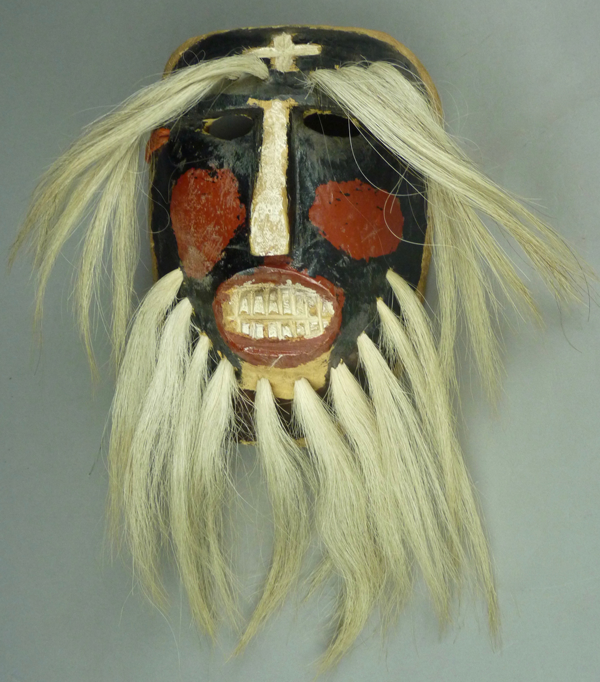
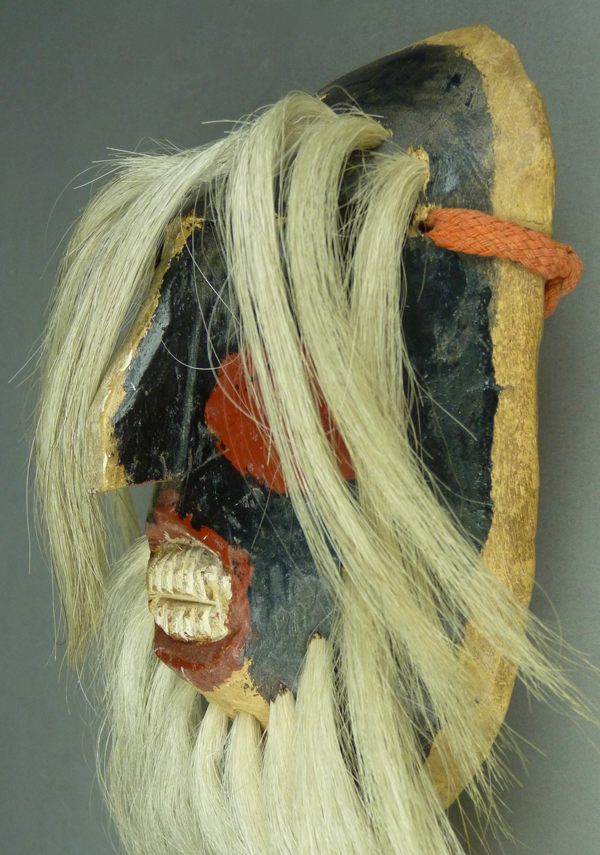
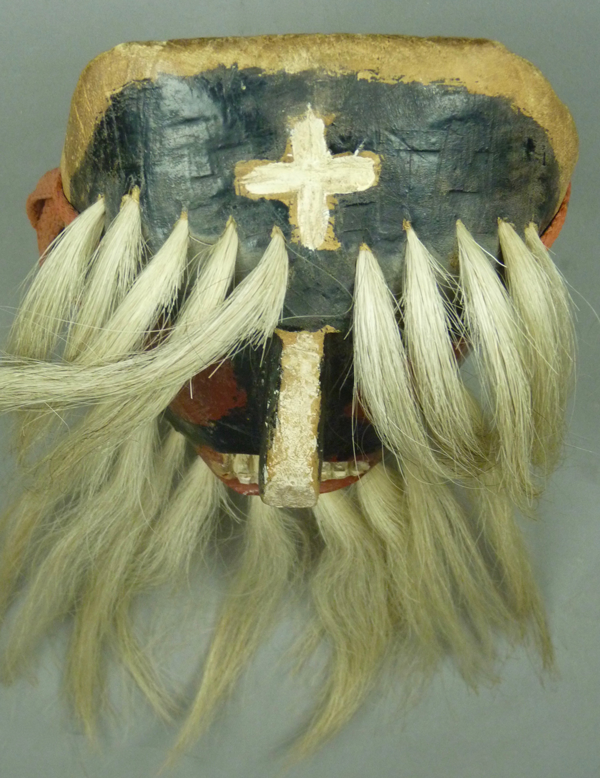
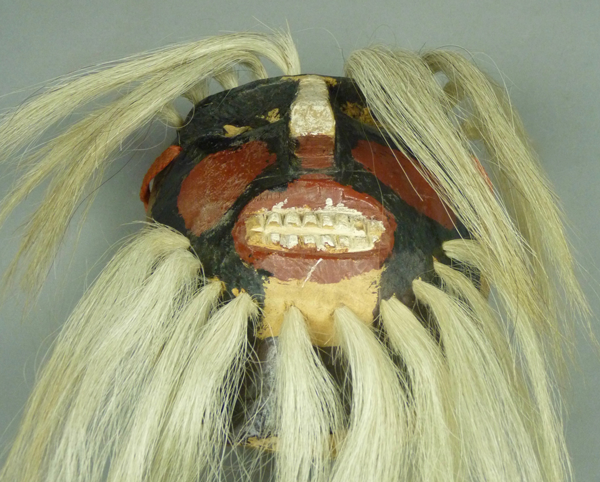
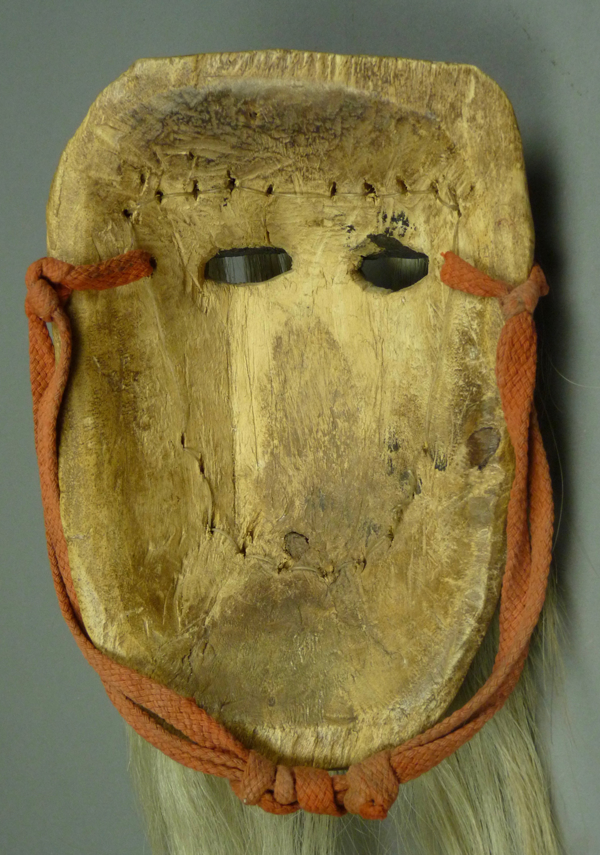
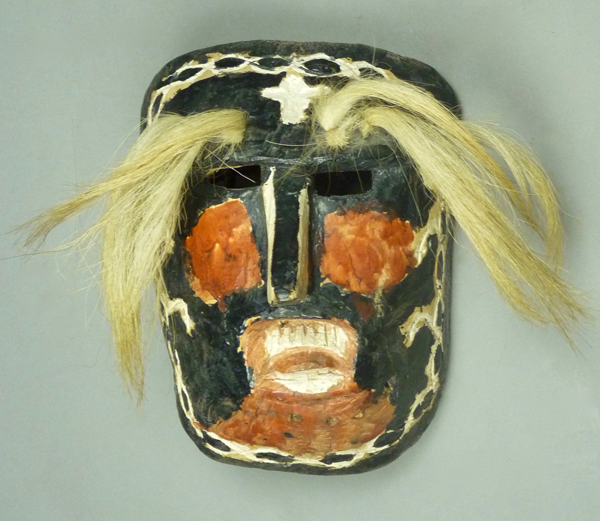
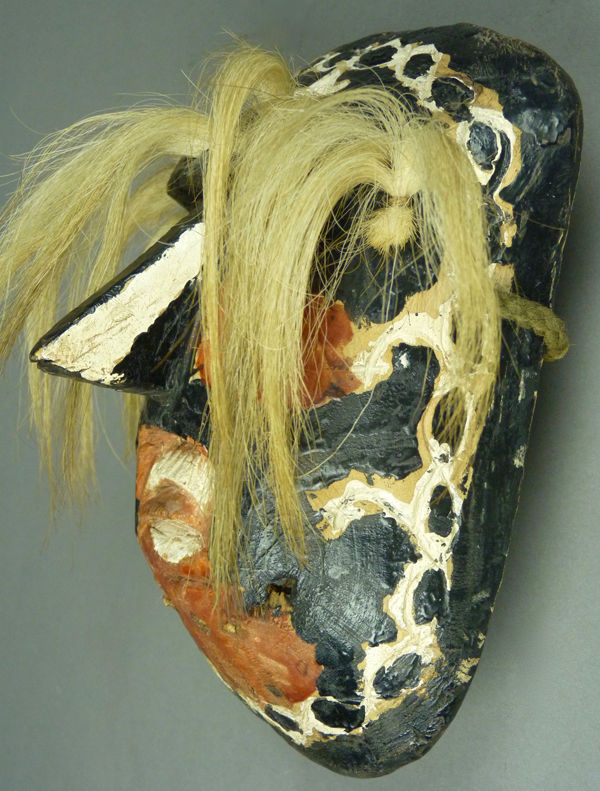
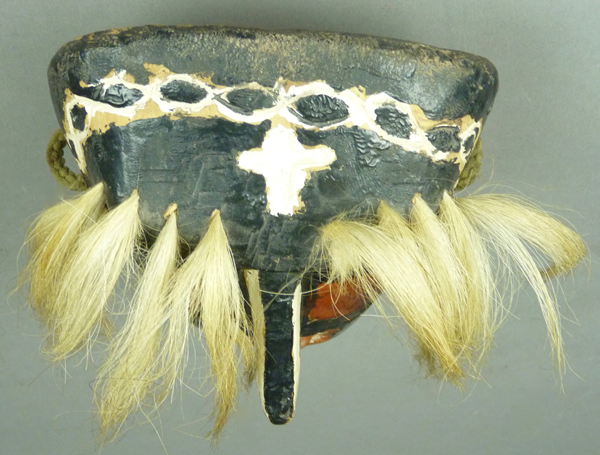

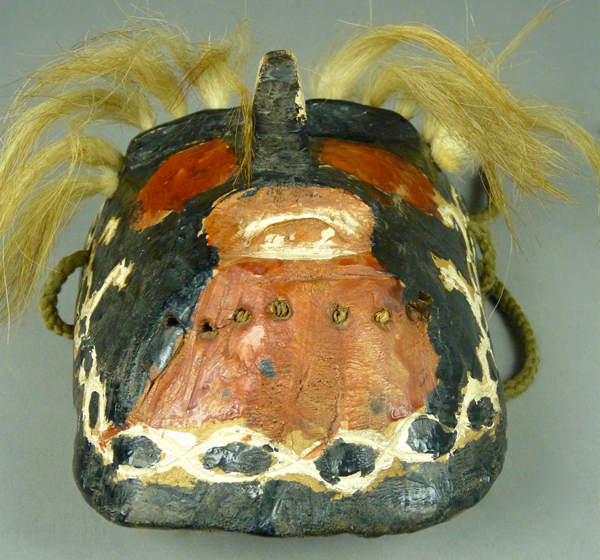

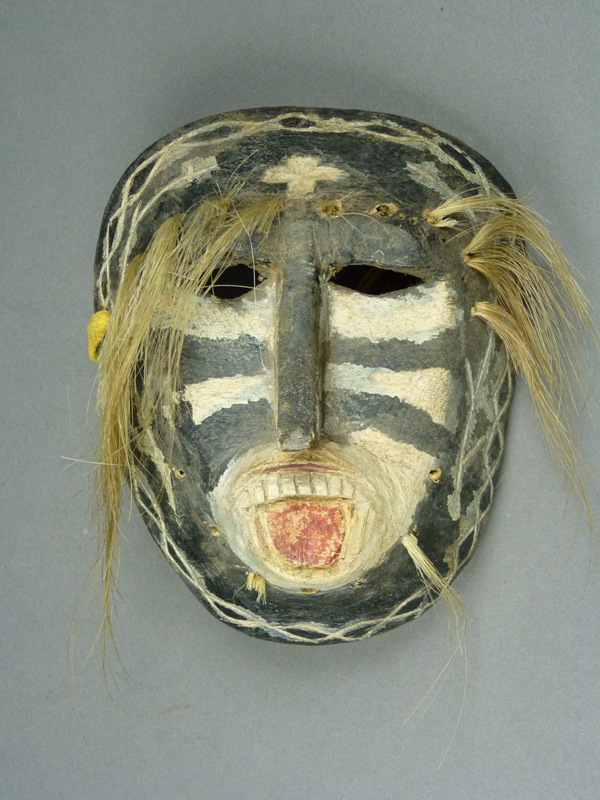
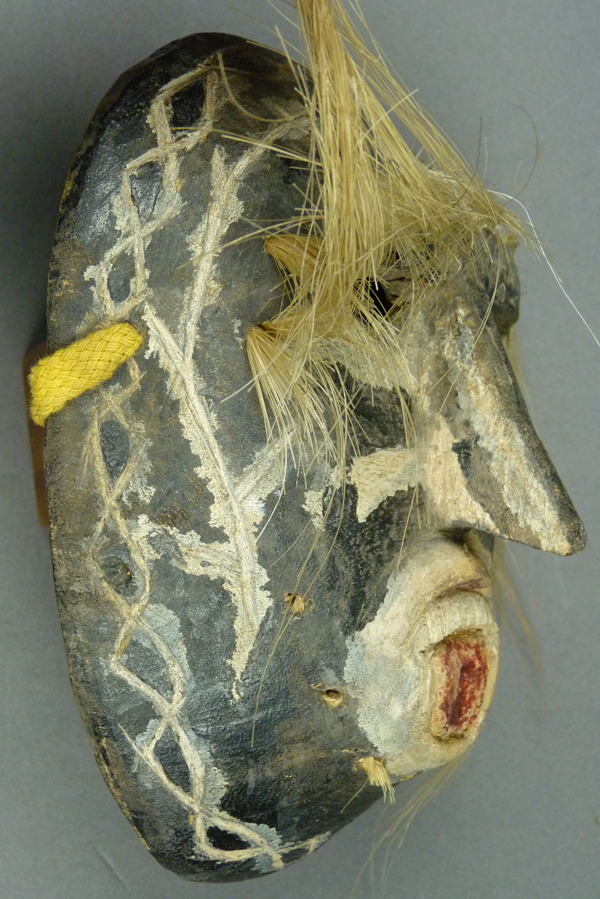
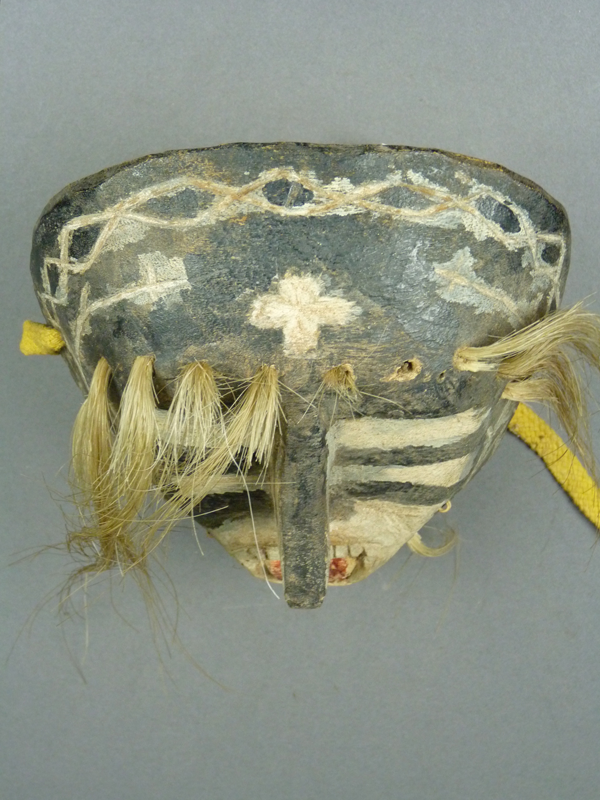

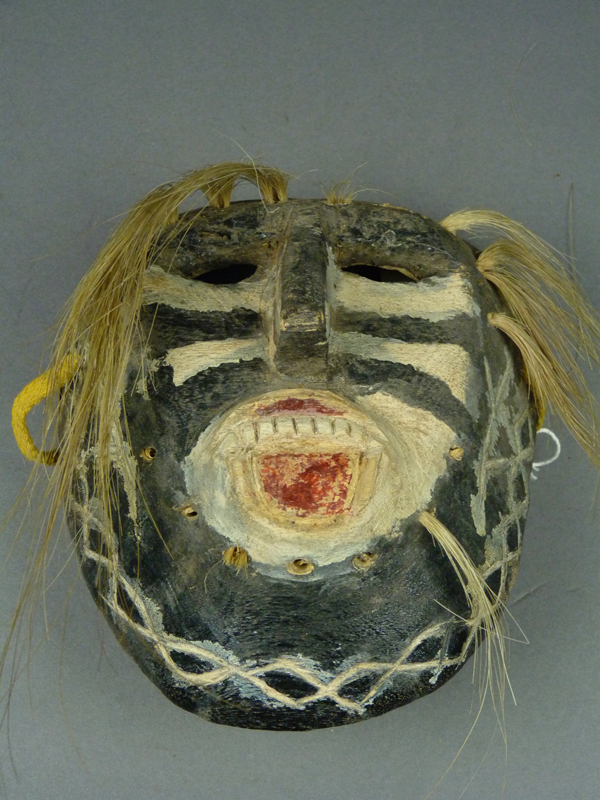
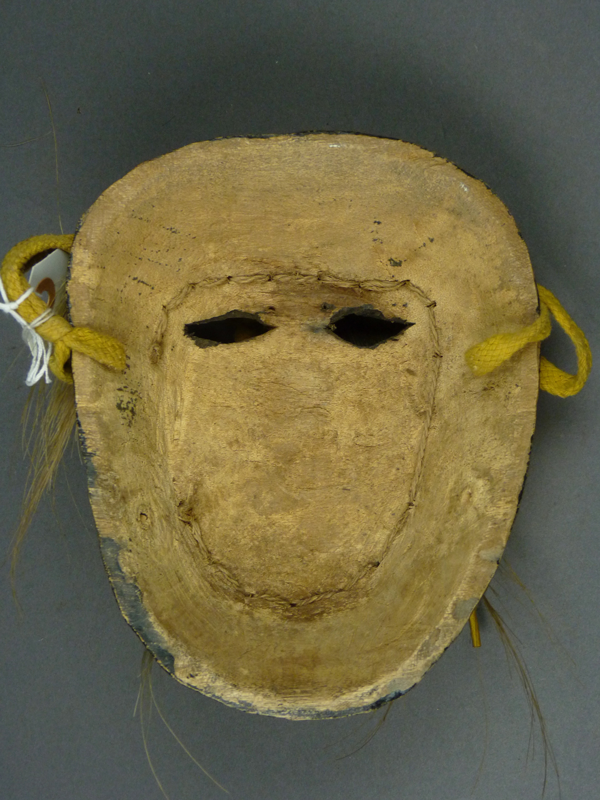
Dr. Stevens,
Wow. I’ve been reading your website for what seems like years but I believe has only been a few days. Every free moment I have, I sneak back to read more and look at more photos l. I can see how studying all of these amazing peoples, & their art and traditions, could take over one’s life!
I’m writing here becuase I can’t get either the “Contact” or the “Ask or tell” pages to work. They come up blank. Maybe it’s an issue with the mobile version? I would like your quick opinion on a mask i bought a while ago. Is there any way to send you some photos? (I know you don’t do appraisals, and I’m just curious if you have any thoughts on it).
The mask is also on ebay, if that is easier for you to look at. Its probably not even related l(its very primitive looking). But the fact that the pink paint looks so old is what’s making me curious. And that the back looks like many of the others…
thank you for the amazing work you do and share!
Rachel Méndez
PS tried to put the eBay link in the field for website that is below this, buł it looked like spam to the server. You can find it by searching eBay for “vaquero dance mask folk art” and my
User name on eBay is 2ndhandportland